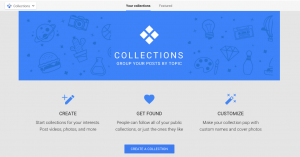The world of blogging has changed considerably over the last decade, particularly in terms of content requirements and the ease with which income can be generated. While blogging can still be a lucrative past-time, for example, the quality, diversity and relevance of published content is much more important than it was in 2005.
At the heart of this is the rise of online video consumption, with visual media beginning to dominate virtual and mobile market spaces. According to recent statistics, the average time spent watching online video content will increase to one hour per day, with an impressive half of these views recorded on a mobile device.
How to Launch a successful Video Blog
The rise of video content has had a huge influence in the world of blogging, with many keen to integrate visual media into their published. For some it has even become the dominant form of media, as they look to publish relevant blog content that engages modern-day readers. Either way, video blogging has emerged as the primary method of interacting with readers and achieving positive search engine results,
With this in mind, here is a brief guide to establishing a viable and engaging video blog that enables you to connect with viewers: –
Identify Topical content that has Real-time relevance
Before you focus on the technical aspects of creating, sharing an integrating a video blog, it is important to make sure that you are publishing relevant content. This quality of your narrative will be the hook that ultimately engages viewers, and whether you adopt an informative or viral approach to communicating with your audience there must be a strategic theme that underpins this.
It is also worth reinforcing the importance of mobile, with smartphones and tablets expected to drive a 19.8% increase in online video consumption in 2016. This increases the capacity of viewers to access live content and breaking news while on the move, which in turn is driving the consumer demand for real-time information. This should therefore direct your research and content creation efforts, as you look to create an engaged and loyal audience.
Focus on Audio and lighting when shooting your video
When it comes to shooting your video content, the process can be overwhelming for those without experience. It is also important to create a professional and visually appealing video, however, which clearly conveys any messaging and content that you wish to share. Poor production values can easily undermine even the most topical and informative of video blogs, as they provide a distraction to viewers and draw their focus to issues with staging, lighting or audio quality.
It is crucial that you focus on maintaining a high quality of audio and lighting throughout your video, The former is particularly important, as it enables you to salvage poor quality visuals by translating the content into an audio post or podcast. To achieve excellent audio quality, consider investing in an external USB microphone and connecting this to your camcorder or laptop.
In terms of lighting, modern video bloggers are helped by the fact that the majority of digital cameras are more than adequate for producing high-enough resolution YouTube videos. You can improve the quality of your video by optimizing natural light and ensuring that any sources of illumination are behind the camera.
Optimise resources such as YouTube and Vimeo
When it comes to hosting and distributing your video, YouTube should always be your first port of call. Not only is it the second largest search engine behind Google, for example, but it also offers you access to in excess of one billion unique users. With a carefully worded description and relevant tags, you can optimize the visibility of your content to reach a vast, global audience.
In terms of practical advice, there are two key steps. The first is to host your video on YouTube before embedding this on your personal or commercial blog, as this enables you to minimize downtime and improve loading speeds. Secondary to this is the importance of additional video channels and resources, with examples such as Vimeo and Tumblr offering additional coverage as part of an integrating sharing network.
Vimeo is a particularly resource, as a lack of advertisements and cleaner layout makes it easier for targeted viewers to enjoy your content uninterrupted.
Digital & Social Articles on Business 2 Community(46)






